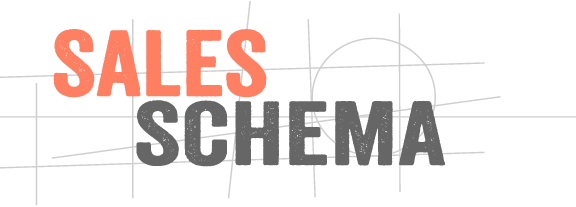A timeline is a valuable organizational tool, and can be used to help a prospect or customer plan the course of a project from start to finish. Less obvious: it can serve as a powerful sales tool.

A timeline is a great way to tie your prospect to the calendar, which helps accelerate your sales process in the face of delays and low urgency. A timeline shows when action must be taken in order to enjoy the future value your offering promises.
(A great timeline creator is Tom’s Planner. It’s fast and clean, and once you make a template it’s easy to move things around. They offer a free demo).
Setting Up Your Timeline
In your timeline, focus on three phases: Setup, Implementation, and Wrap-Up. This is the best way to present the process because it clearly separates the steps into a logical beginning, middle, and end. This makes it possible for your prospect to visualize the process, and it gives them a feel for what will be required from them. Once they can visualize it, they will be much more comfortable when it comes time to make the vision a reality.
In the “Setup” phase, make sure your prospect knows what they have to do before getting started. If you need a services agreement, a 50% deposit, or other paperwork, this phase will clarify your onboarding process and create urgency.
The next phase is the engagement itself: the “Implementation” phase. Here you’re helping your prospect get a feel for the experience of working with you.
Finally, the “Wrap-Up” phase includes steps that take place after the solution has been put in place, when the value is realized. This may include a consulting session on how to get the best results from the solution. Also, note an item for receiving final payment and for tying up any other loose ends.
2 Lesser-Known Techniques
First, you might wonder what to do if your prospect does not like something in the timeline. What if they are intimidated by all the things happening so fast, or have some other disagreement related to timing? The great thing is, you can collaborate with the prospect to make the timeline fit their needs. In fact, you want this collaboration because your prospect will be investing time and energy, and it’s the closest you can get to making the engagement real. The exercise will accelerate your sales cycle and make signing up the next logical step.
The second secret is that you don’t have to use the same timeline for everyone. Customize it to meet the challenges and desires of the individual prospect. You might keep the same general structure, but you can add an item or two to cater to their specific pain. For example, if they worry about how their team or superiors will perceive the results of your solution, add a step to the Wrap-Up period, called Debrief Phase, focusing on the satisfaction of these team members.
Timelines are easy to propose to your prospect; they will almost always be eager to receive them.
Use Timeline to Secure a Follow-Up
You can send the timeline at any juncture after the first meeting. It is best used to hold the prospect to a schedule, when they appear to be delaying or generally lacking urgency. Here’s how you might use the timeline to arrange a follow-up appointment:
“Would it be helpful if I created a timeline to show you what the engagement would look like?”
(They will most likely answer yes.)
“Great, I’ll send it over in an email. To make sure it’s clear and to see if any edits are needed, I’d like to arrange a time to talk briefly next week. Since I have my calendar in front of me, can we aim for Tuesday at 3?”
From there, use the urgency of the timeline dates to maintain communication. After the follow-up meeting, you can say:
“To make sure we stay ahead of the calendar, I think we should discuss the next best steps on [Date]. Does that work for you?”
A timeline is far more valuable than it first appears. It keeps up urgency, gives you an opportunity to collaborate, and lets you custom-tailor your offering to your prospect’s needs in a natural way.
I cover this concept and much more in my forthcoming book The B2B Sales Blueprint…







